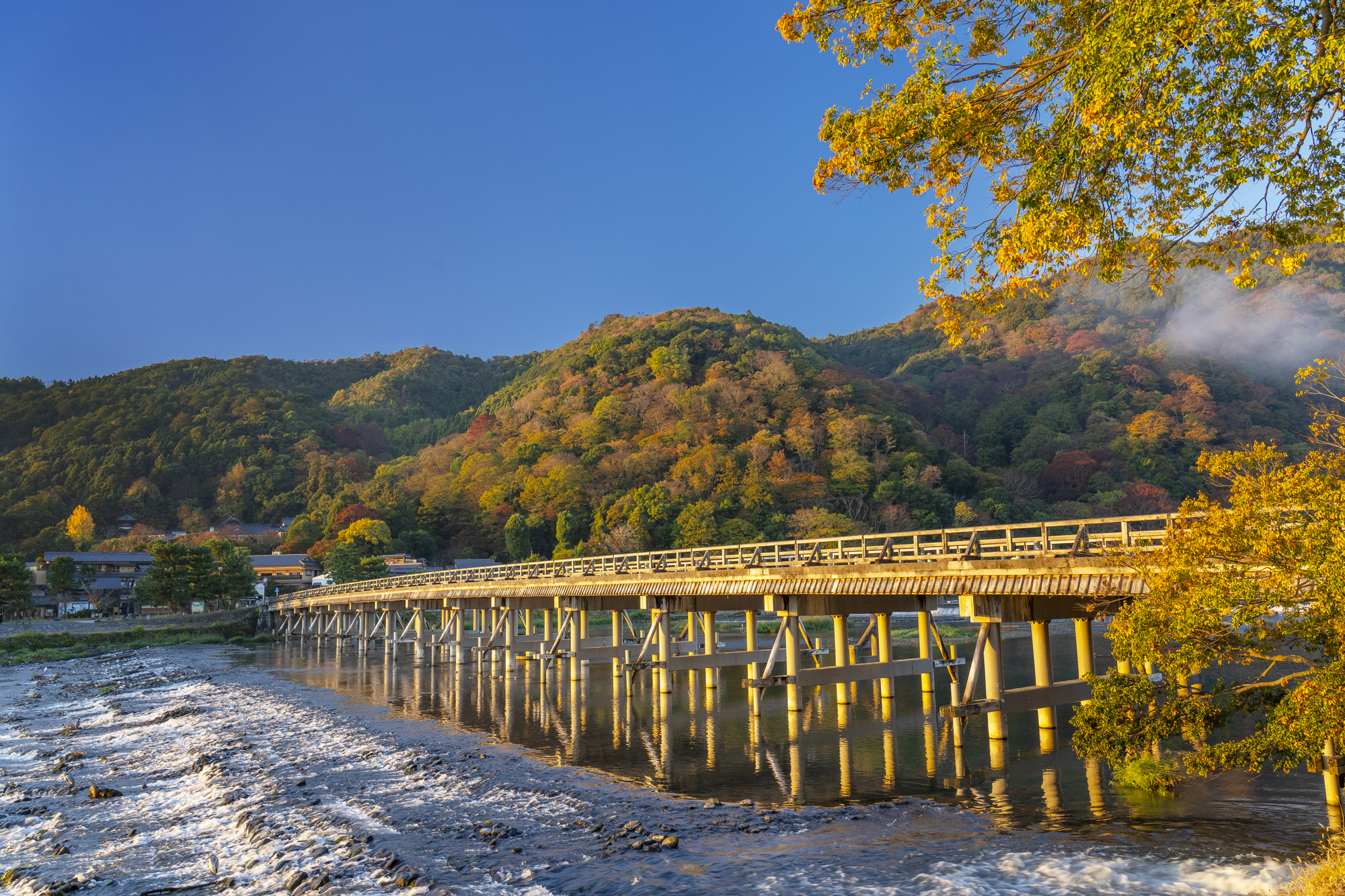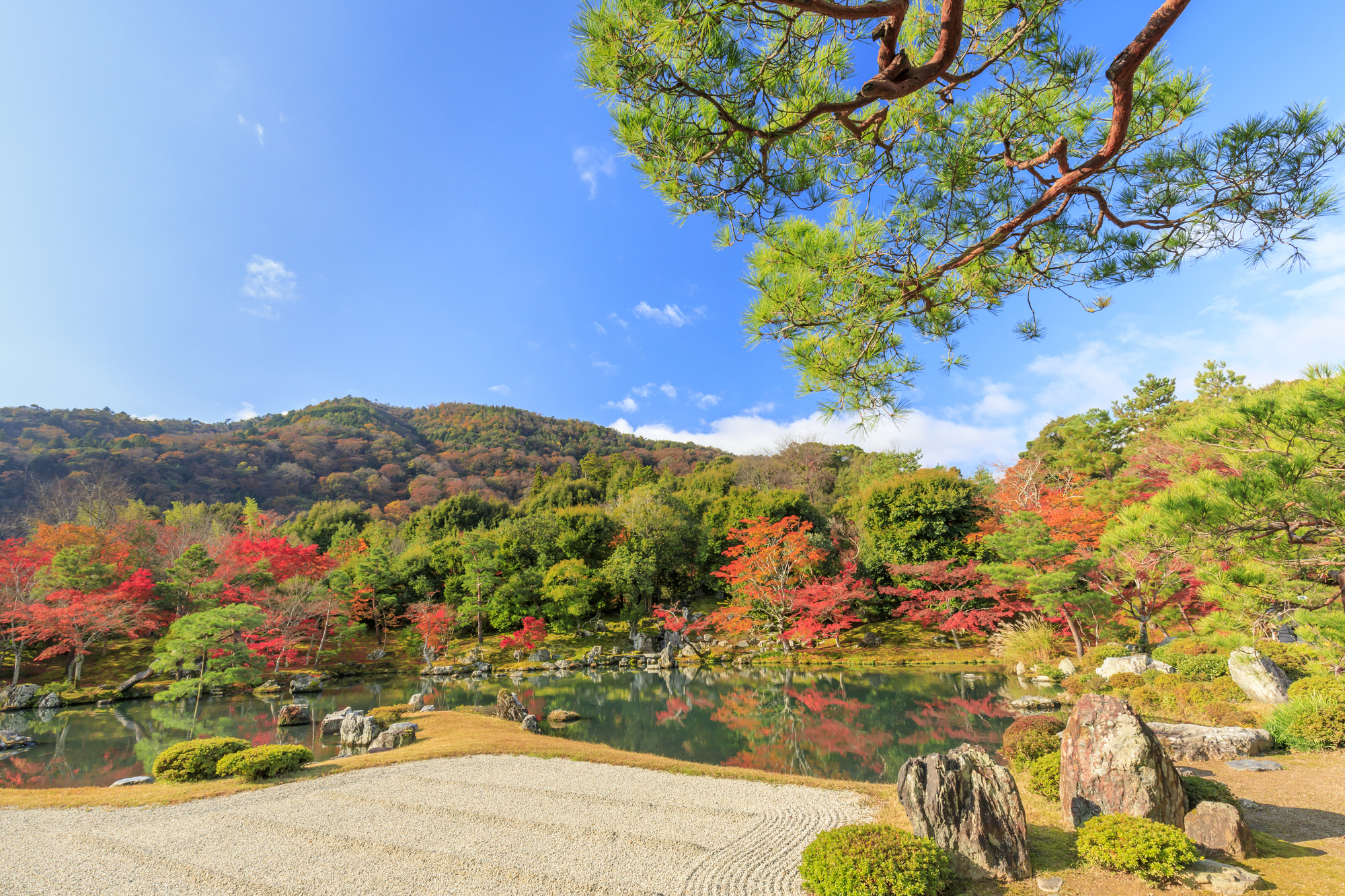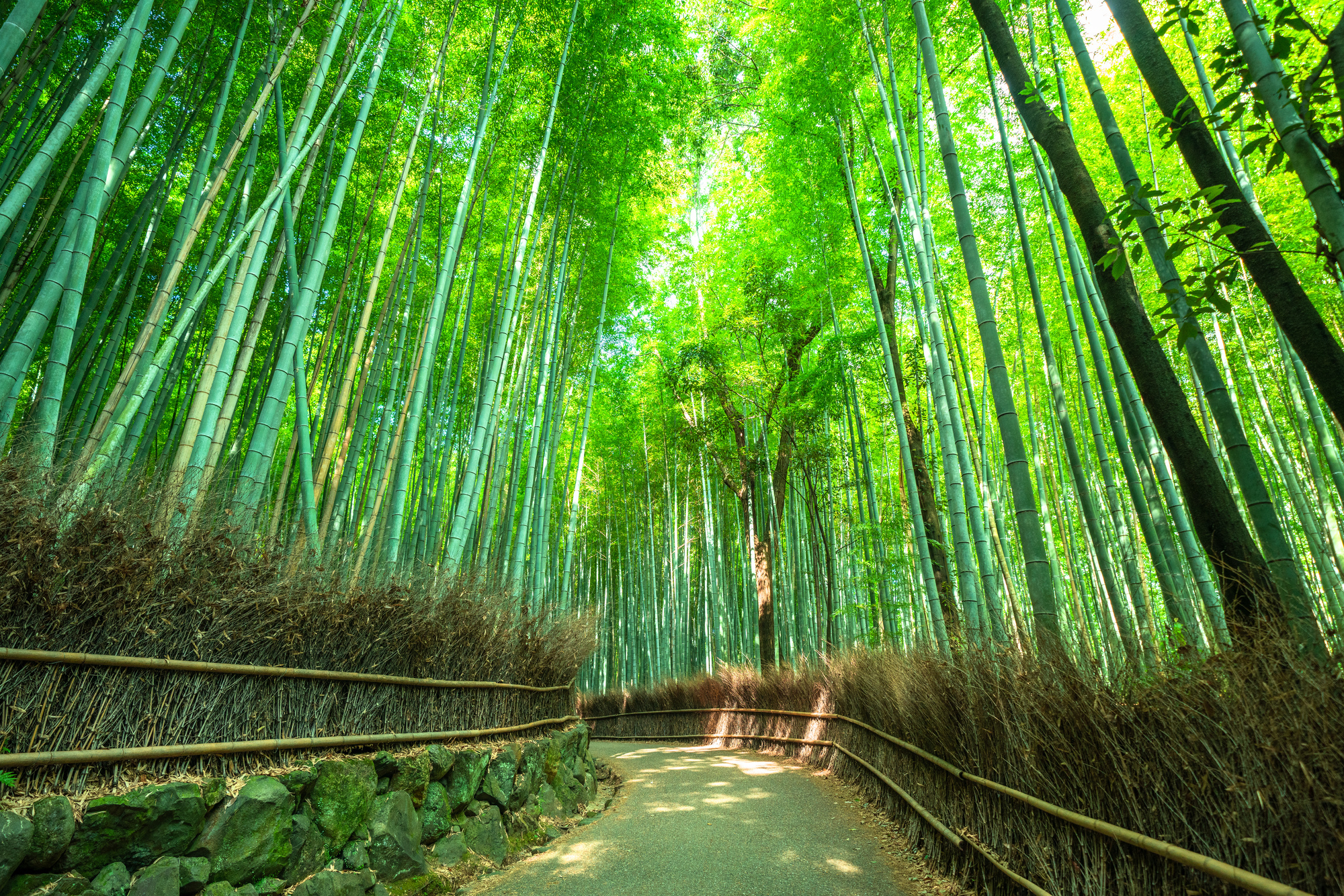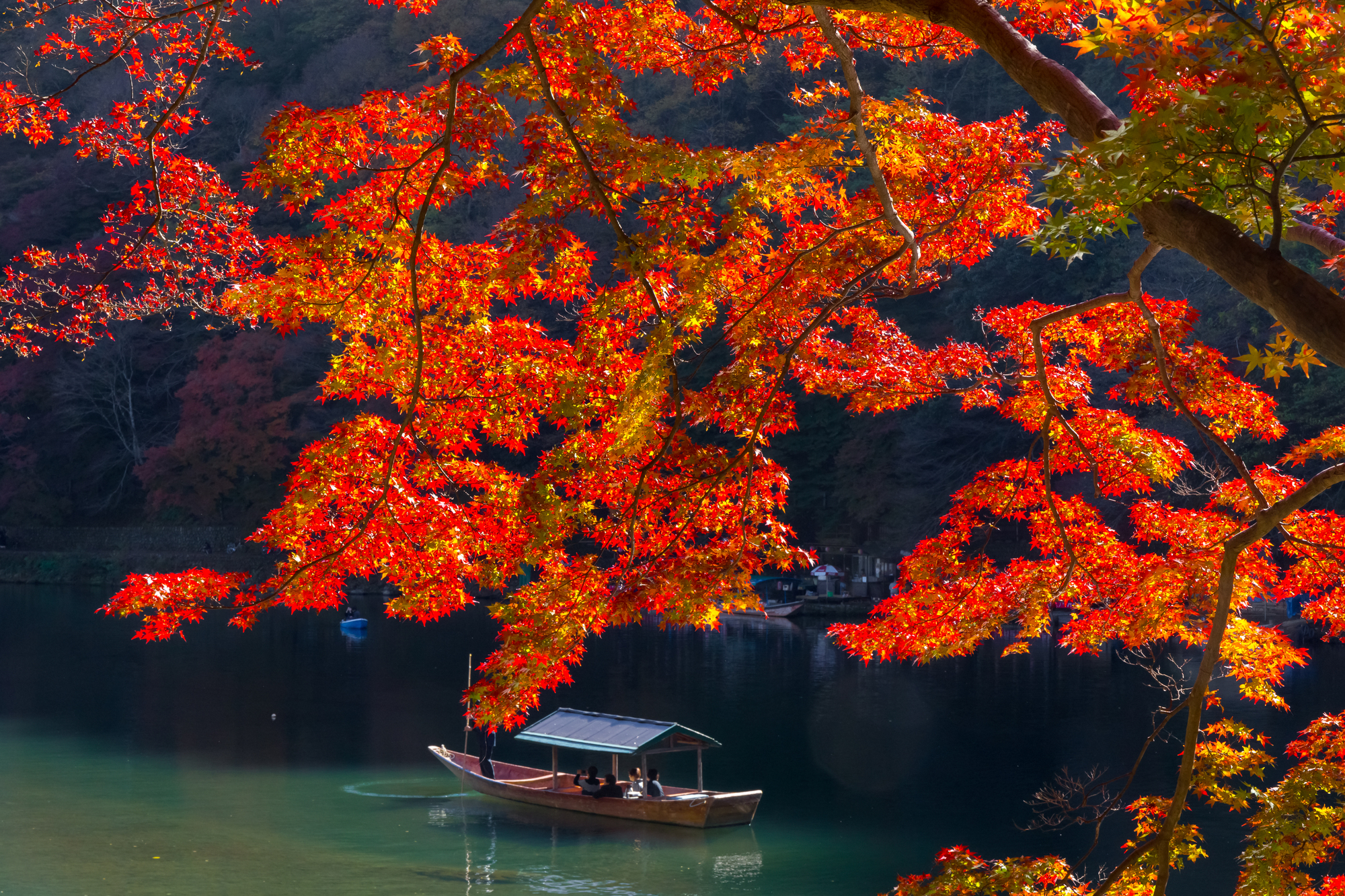Complete Arashiyama GuideEtiquette & Spots to 120% Enjoy Elegant Scenery and Culture
Table of Contents
Welcome to Arashiyama, a Place Breathing with the Elegance of the Ancient Capital

Among the thousand-year capital of Kyoto, Arashiyama is a place where exceptionally graceful nature and refined culture harmonize. The gentle Katsura River flows with majestic mountains in the background, and the "Togetsukyo Bridge" spans across it. Take a step further, and you'll find the "Bamboo Grove," a tranquil corridor of bamboo stretching to the heavens. Arashiyama has a history as a villa area beloved by Heian aristocrats and continues to captivate many people today.
While many guidebooks list beautiful places, this guide goes a step further. It aims to make your journey deeper and more meaningful by focusing not just on "where to go," but on "how to behave and what to feel." It carefully explains the etiquette and tips that international visitors might overlook, allowing you to pay respect to the history and culture behind Arashiyama's elegant scenery and truly enjoy the atmosphere of the ancient capital.
The natural beauty that changes with each season, and the temples and gardens that stand as if melting into it. By understanding the stories and the preserved tranquility within each of these, your journey will transform from mere sightseeing into a rich experience felt with the heart. Now, let's begin a special journey to immerse yourself in the elegance of the ancient capital and appreciate its beauty with respect.
1.From Aristocratic Villas to a Global Tourist Destination: The History and Culture of Arashiyama
The charm of Arashiyama lies not only in its beautiful natural scenery but also in the accumulation of a thousand years of history and culture. Knowing its background will make the scenery before you appear deeper and more moving.
1-1. A Scenic Spot Loved by Heian Aristocrats: A Place Where Stories are Born
The history of Arashiyama began in the Heian period (794-1185) when aristocrats built their villas in this scenic area. They enjoyed boating, composed waka poems, and admired the changing seasons. Arashiyama even appears in "The Tale of Genji," considered the world's first novel, where scenes of the protagonist Hikaru Genji spending time in this area are depicted. From this era, Arashiyama has been not just a scenic spot but a source of cultural inspiration.
The iconic Togetsukyo Bridge is said to have been first built by the monk Dosho during the Jowa era (834-848). Although the current bridge was reconstructed in 1934, its name originates from the Kamakura period, when Emperor Kameyama described the moon moving over the bridge as resembling "the crossing of a clear moon." This anecdote alone shows how deeply Arashiyama was connected with nature and poetic sensibility.
1-2. The Spirit of Zen and Garden Beauty: Arashiyama's Cultural Heritage and World Heritage

As Japan moved into the age of the samurai, Arashiyama became a place where Zen culture flourished. The center of this was Tenryu-ji Temple, founded in 1339 by the first shogun of the Muromachi shogunate, Ashikaga Takauji, to pray for the soul of Emperor Go-Daigo, with whom he had been in conflict. The temple's founding abbot was Muso Soseki, a high-ranking monk and a master of garden design.
His creation, the Sogenchi Pond Garden, is a magnificent garden that incorporates the mountains of Arashiyama and Kameyama as "borrowed scenery" (shakkei). It was the first garden in Japanese history to be designated as a National Historic Site and Special Place of Scenic Beauty. The garden fuses the rigorous spirit of Zen training with natural beauty, leading the viewer's mind to tranquility. Tenryu-ji Temple was registered as a UNESCO World Cultural Heritage site in 1994 as part of the "Historic Monuments of Ancient Kyoto." Visiting Arashiyama is to experience this globally recognized cultural heritage.
1-3. [2025 Latest] Challenges for Crowd Mitigation and Sustainable Tourism
Today, Arashiyama attracts tourists from all over the world, leading to significant congestion, especially during the cherry blossom and autumn foliage seasons and on weekends. While this reflects its popularity, it also affects the lives of local residents and the quality of the tourist experience.
To address this issue, the city of Kyoto and local tourism associations are implementing various measures. For example, live cameras are installed at major intersections to stream real-time crowd conditions on websites, encouraging visitors to disperse their visiting times. They also strongly recommend the use of public transportation and have strengthened restrictions on private cars on surrounding roads.
We ask for the cooperation of international visitors in understanding this background and contributing to sustainable tourism by checking crowd conditions on official websites, using public transportation, and practicing "morning sightseeing" as described later.
2.Travel Preparation and Basic Information: The First Step to a Smart Journey
2-1. A Thorough Comparison of Access to Arashiyama from Kyoto City (JR, Hankyu, Randen)
- JR Sagano Line: Features:The fastest route from Kyoto Station, with no transfers. About 11 minutes by rapid train, 17 by local. Arrival Station: "Saga-Arashiyama" Station. Closest to the Bamboo Grove and the Torokko Saga Station. Note: It gets crowded with local commuters and students during rush hour (7:30-9:00 AM). It's wise to avoid this time if you have large luggage.
- Hankyu Arashiyama Line: Features: Convenient if you are starting from downtown Kyoto, like Shijo-Kawaramachi or Shijo-Karasuma. One transfer is required at Katsura Station. Arrival Station: "Arashiyama" Station. Located on the south side of the Togetsukyo Bridge, near Nakanoshima Park. Note: The station is on the opposite side of the Katsura River from the JR station, so it may require a bit of walking depending on your destination.
- Keifuku Electric Railroad (Randen): Features: The only tram in Kyoto. You can enjoy the city scenery while rattling along. You can board from Shijo-Omiya or Kitano-Hakubaicho (near Kitano Tenmangu Shrine). Arrival Station: "Arashiyama" Station. Located in the heart of Arashiyama, right next to the area with souvenir shops and restaurants. Note: It's slower, but the ride itself is a tourist experience. A one-day pass allows you to get off along the way to visit other World Heritage sites like Ninnaji and Ryoanji temples.
2-2. Getting Around Arashiyama: A Smart Mix of Walking and Riding
- Sagano Scenic Railway: A tourist train that uses the tracks of the old San-in Main Line. It connects Torokko Saga Station to Torokko Kameoka Station in about 25 minutes, offering views of the beautiful Hozugawa River gorge. The open-air "The Rich" car is especially popular for feeling the breeze. Advance ticket reservation is strongly recommended. Tickets can sell out weeks in advance during the cherry blossom and autumn foliage seasons.
- Hozugawa River Boat Ride: A thrilling two-hour boat trip down the 16km rapids from Kameoka to the Togetsukyo Bridge in Arashiyama. The skillful maneuvering of the boatmen and their humorous commentary are part of the charm. A popular combination is to take the train up and the boat down.
- Rental Bicycles: Several rental shops are available near the Togetsukyo Bridge and JR Saga-Arashiyama Station. It's very convenient for venturing further into the Sagano area to places like Daikaku-ji Temple or Adashino Nenbutsu-ji Temple. However, be aware that some paths, like the Bamboo Grove, are difficult or prohibited for cycling.
2-3. The Most Important Travel Tip: A Time Strategy to Avoid Crowds
- Best Time: On a weekday morning, before 8 AM. At this time, there are few tourists, and you might have the chance to have the tranquil space to yourself, listening to the sound of bamboo leaves rustling in the wind and enjoying the sunlight filtering through.
- Time to Avoid: From around 10 AM to 3 PM. During these hours, the path is packed with tourists from all over the world, making it difficult even to take a photo.
- Planning Tip: If you are staying overnight, a walk through the bamboo grove first thing in the morning is the ultimate luxury. Even for a day trip, if you take an early train from Kyoto Station, you can arrive in Arashiyama before 8 AM. It's a smart plan to visit the main spots in the morning and explore slightly off-the-beaten-path areas or relax in a cafe in the afternoon.
3.[By Area] Popular Tourist Spots and Etiquette to Know
3-1. Togetsukyo Bridge & Katsura River Area: Manners on the Bridge and Photography Tips
Walking Manners on the Bridge: The Togetsukyo Bridge has more traffic than it appears. In addition to pedestrians, rickshaws and authorized service vehicles also pass through. Stopping suddenly in the middle of the bridge or blocking the path as a group is very dangerous. Especially when leaning against the railing to enjoy the view, always be mindful of the traffic behind you.
Photography Etiquette: Everyone wants to capture this beautiful bridge in a photo. The spirit of mutual courtesy is paramount. Avoid setting up a tripod for long periods during crowded times. When taking selfies, be sure to check your surroundings to ensure your selfie stick does not hit anyone. After taking a few shots, move on promptly to give others a chance.
3-2. Tenryu-ji Temple Area: How to Spend a Quiet Time at a World Heritage Site
Tenryu-ji Temple is both a tourist destination and a sacred place where Zen training takes place.
Mindset for Visiting: Upon entering the temple grounds, calm your mind and act quietly. Loud conversations are strictly forbidden, especially in the main hall and the Tahoden Hall.
Garden Viewing Etiquette: The true value of the Sogenchi Pond Garden is appreciated by sitting and viewing it quietly. When sitting on the veranda, be considerate of others and do not occupy the same spot for a long time. The white sand and moss in the garden are part of the artistic expression. Never step into these areas or move the stones.
3-3. Bamboo Grove & Nonomiya Shrine Area: Special Rules to Preserve the Serenity

This area can be considered the most delicate spot in Arashiyama.
Respecting the Silence: The value of the bamboo grove lies not only in its visual beauty but also in its "silence," where you can hear the wind and the rustling of leaves. Here, it is recommended to speak in a low voice or to experience the atmosphere with your five senses without talking.
Protecting the Bamboo Grove: There are low fences along the path. These are to protect the bamboo roots and shoots. It is strictly forbidden to cross the fences and enter the bamboo grove. Also, graffiti, such as carving names on the bamboo, is an act of vandalism against a cultural property and is not tolerated.
Behavior at Nonomiya Shrine: Known for its god of matchmaking, Nonomiya Shrine is a small but historic shrine. People tend to gather at points of interest like the Kuroki Torii (a torii gate made of unbarked wood) and the "Okame-ishi" (turtle stone), but please wait in line patiently and offer your prayers quietly.
3-4. Sagano Scenic Railway & Hozugawa River Area: Riding and Boating Manners for Enjoying the Views
These rides are both transportation and attractions in themselves.
Manners on the Scenic Railway: Seats are assigned. To avoid obstructing other passengers' views, do not lean far out of the windows or stand in the aisle for long periods. The train slows down at scenic points, but it is basic manners to enjoy them from your seat.
Precautions on the Hozugawa River Boat Ride: During the boat ride, always follow the boatman's instructions. Safety instructions, especially regarding splashing water, are important. Other passengers are on the same boat. Refrain from being overly noisy or actions that could rock the boat, and enjoy the journey together.
4.The Essentials! A Themed Guide to Manners for Enjoying Arashiyama
4-1. Etiquette for Visiting Temples & Gardens
Attire: Arashiyama involves a lot of walking in nature. Comfortable shoes are a must, especially since temple grounds often have unpaved areas and stairs. Excessively revealing clothing may be considered inappropriate for sacred places.
Goshuin (Temple Seals): A Goshuin is received as a proof of worship, not a souvenir stamp. When presenting your Goshuin-cho (seal book), open it to the page you want stamped and ask politely.
4-2. Consideration in Dining & Shopping
Eating on the Go: Arashiyama has many tempting street foods like soft-serve ice cream and croquettes. However, eating while walking on crowded streets can lead to accidentally soiling other people's clothes. The basic manner is to eat in front of the shop where you bought it or in a designated rest area. Always take your trash with you or dispose of it in the shop's trash bin.
The Importance of Reservations: Scenic restaurants near the Togetsukyo Bridge and popular Kyoto cuisine restaurants are often fully booked. It is wise to make a reservation, especially for lunch, or aim for an earlier time, such as before 11:30 AM.
4-3. Tips for Kimono & Yukata Rental
Strolling in traditional Japanese wear is a wonderful way to soak in the Kyoto atmosphere.
How to Walk: In unfamiliar zori sandals, taking smaller steps and walking slightly pigeon-toed will help keep the hem neat and look more elegant. Be careful on unpaved paths like in the Bamboo Grove.
Poise: When climbing stairs, lifting the hem of the kimono slightly makes it easier to walk. When sitting in a chair, sit shallowly to avoid crushing the obi (sash), and place the sleeves on your lap to keep them off the ground for a graceful look.
4-4. Manners on Public Transportation
How to Ride the Bus: On Kyoto's city buses and Kyoto Bus, you board from the rear door and pay the fare when you exit from the front door. The boarding and alighting methods for the Randen tram can vary by station, so watch what others are doing and follow suit.
Consideration in Crowds: On a crowded bus or train, holding your backpack in front of you or placing it at your feet will create more space for other passengers.
5.Planning Your Trip: Model Courses for Practicing Good Manners
5-1. [Half-Day] Arashiyama Highlights Condensed Course (From Early Morning)
- 7:30 AM: Arrive at JR Saga-Arashiyama Station.
- 7:45 AM: Stroll through the tranquil Bamboo Grove. Take a deep breath in the magical, empty space. Walk quietly, respecting the manners.
- 8:30 AM: The World Heritage site Tenryu-ji Temple opens. Be the first to view the Sogenchi Pond Garden. Sit on the veranda and contemplate the garden in silence.
- 10:00 AM: Cross the Togetsukyo Bridge. Capture the panoramic view of Arashiyama from the still relatively empty bridge.
- 10:30 AM: Grab a coffee from a place like % ARABICA on the south side of the bridge and take a break in Nakanoshima Park along the Katsura River.
- 11:30 AM: Have a slightly early lunch at a restaurant near the Togetsukyo Bridge.
- 1:00 PM: Head to Randen Arashiyama Station. Soothe your tired feet at the "Station Footbath" before taking the tram back to central Kyoto.
5-2. [Full-Day] Enjoying the Rides! Arashiyama & Sagano Full Course
- 9:00 AM: Arrive at JR Saga-Arashiyama Station. Head to the adjacent Torokko Saga Station.
- 9:30 AM: Board the pre-booked Sagano Scenic Railway. Enjoy the beauty of the Hozugawa River gorge.
- 10:00 AM: Arrive at Torokko Kameoka Station. Transfer to a shuttle bus to the Hozugawa River Boat Ride boarding point.
- 10:30 AM: Embark on the Hozugawa River Boat Ride. Enjoy a thrilling and beautiful two-hour boat journey. Follow the boatman's instructions for safety.
- 12:30 PM: Arrive near the Togetsukyo Bridge in Arashiyama. Have lunch at a reserved restaurant.
- 2:00 PM: Visit the World Heritage site Tenryu-ji Temple.
- 3:30 PM: Stroll through the Bamboo Grove. Experience the daytime bustle while being mindful not to block the flow of people.
- 4:30 PM: Look for souvenirs in the shopping streets around Arashiyama Station.
- 5:30 PM: Head back on your preferred railway (JR, Hankyu, or Randen).
The Elegance of the Ancient Capital Engraved in Your Heart

The beauty of Arashiyama has been polished not just by the nature that exists there, but by the long history and culture of the people who have loved, protected, and coexisted with it. The small considerations introduced in this guide are a tribute we travelers can pay to inherit this beautiful tradition and pass it on to the future. The sound of the wind, the babbling of the river, the rustling of bamboo leaves. May your journey be a wonderful one where you feel the elegance of the ancient capital with all five senses, becoming a part of it yourself.

